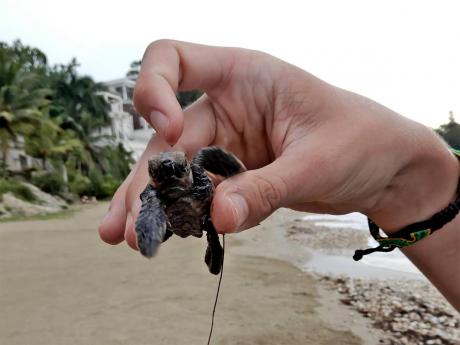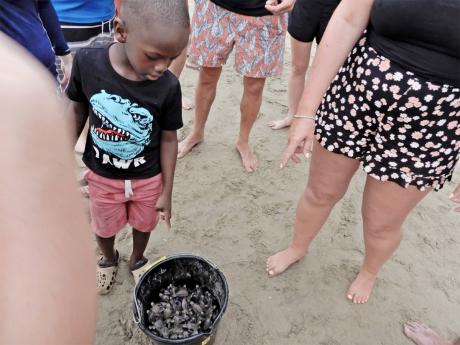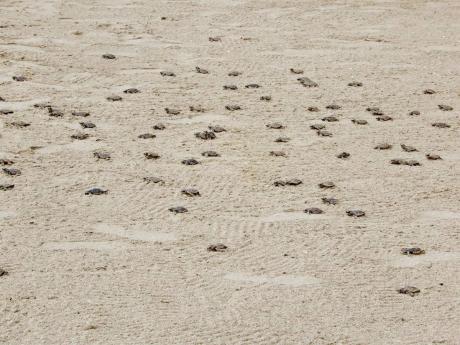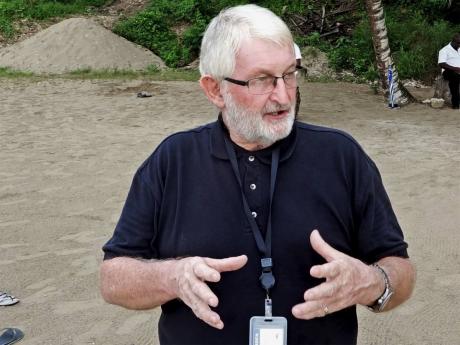‘Turtle Man’ eyes saving extra 3,000 hatchlings a year
Boston University teams up for Hawksbill survival; 220,000 released in Oracabessa Bay
Melvyn Tennant believes he and his team can save an extra 3,000 turtles a year.
The 2018 Gleaner Honour Award winner and 2021 inductee as Member of the Order of the British Empire has been duly recognised for his nearly 20 years of rescuing endangered Hawksbills through the Oracabessa Bay Sea Turtle Project.
The former teacher, dubbed ‘Mel the Turtle Man’, who came to Jamaica in 2003 to retire in a tropical paradise, released around a hundred turtle hatchlings on Friday.
Tennant revealed that he has started working with Boston University on a project that will further enhance the survival of Hawksbill sea turtles.
“We’re going to do data logging next season in the nest for temperature and humidity and we’re going to build an incubator room,” Tennant told The Gleaner at Friday’s turtle release.
Using the incubator, the project could also help increase the number of male turtles whose numbers have fallen in recent years.
Research shows that if turtle eggs incubate below 27.7 degrees Celsius, the hatchling will be male. However, if incubation occurs above 31 degrees Celsius, the hatchling will be female.
With the incubator, the temperature can be moved down slightly in order to create more male hatchlings.
Tennant has had significant gains with the survival of Hawksbill sea turtles.
“As of today, we’ve had 170 nests on this beach, we’ve let go, with the ones that we’ve let go today, something like 6,200, but in the 19 years we’ve been here, we’ve let 220,000 Hawksbill hatchlings out,” he said.
Tennant said the baby turtles are usually released two hours before dark, as that is the optimal time for survival against predators such as mongooses, birds, and crabs.
Just a handful of persons, Jamaicans and tourists, turned out on Friday, but that showing did not diminish the importance of the occasion or the work that Tennant and his team of wardens have been doing over the years.
Every day, in season or out of season, personnel walk the beach checking for nests.
“If we find tracks, we monitor them, record them, and we have pictures of every nest going back to 2007, and it means that we can follow patterns in terms of when the turtles come back and how many turtles, how many eggs they lay, and we’ve got a lot of, basically, very good information.”
A peculiarity of baby turtles is that they instinctively turn and head straight out to the sea, without urging, when they are released on the beach.
Friday was no different.
And the hatchlings’ survival skills tripped in just as they reached the water’s edge, even if washed away out to deep sea by a wave.






